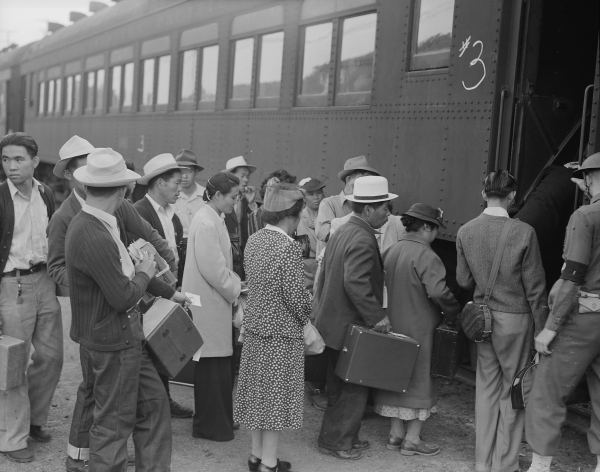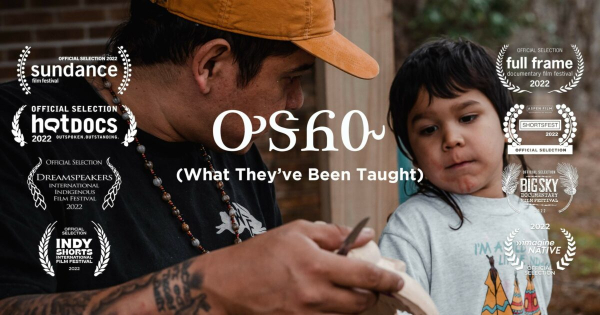Suche
Beiträge, die mit cherokeenation getaggt sind
From #Wikipedia: Internment of Japanese Americans
"During World War II, the United States forcibly relocated and incarcerated about 120,000 people of Japanese descent in ten concentration camps operated by the War Relocation Authority (#WRA), mostly in the western interior of the country. About two-thirds were U.S. citizens.
"These actions were initiated by Executive Order 9066, issued by President Franklin D. Roosevelt on February 19, 1942, following the outbreak of war with the Empire of Japan in December 1941. About 127,000 Japanese Americans then lived in the continental U.S., of which about 112,000 lived on the West Coast. About 80,000 were Nisei ('second generation'; American-born Japanese with #USCitizenship) and Sansei ('third generation', the children of Nisei). The rest were Issei ('first generation') immigrants born in Japan, who were ineligible for citizenship. In Hawaii, where more than 150,000 Japanese Americans comprised more than one-third of the territory's population, only 1,200 to 1,800 were incarcerated.
"#Internment was intended to mitigate a security risk which Japanese Americans were believed to pose. The scale of the incarceration in proportion to the size of the Japanese American population far surpassed similar measures undertaken against German and Italian Americans who numbered in the millions and of whom some thousands were interned, most of these non-citizens. Following the executive order, the entire West Coast was designated a military exclusion area, and all Japanese Americans living there were taken to assembly centers before being sent to concentration camps in California, Arizona, Wyoming, Colorado, Utah, Idaho, and Arkansas. Similar actions were taken against individuals of Japanese descent in Canada. Internees were prohibited from taking more than they could carry into the camps, and many were forced to sell some or all of their property, including their homes and businesses. At the camps, which were surrounded by barbed wire fences and patrolled by armed guards, internees often lived in overcrowded barracks with minimal furnishing."
[...]
Prior use of internment camps in the United States
"The United States Government had previously employed civilian internment policies in a variety of circumstances. During the 1830s, civilians of the indigenous #CherokeeNation were evicted from their homes and detained in 'emigration depots' in Alabama and Tennessee prior to the deportation to Oklahoma following the passage of the #IndianRemovalAct in 1830. Similar internment policies were carried out by U.S. territorial authorities against the #Dakota and #Navajo peoples during the American Indian Wars in the 1860s.
"In 1901, during the Philippine–American War, General J. Franklin Bell ordered the detainment of #Filipino civilians in the provinces of Batangas and Laguna into U.S. Army-run #ConcentrationCamps in order to prevent them from collaborating with #Filipino General Miguel Malvar's guerrillas; over 11,000 people died in the camps from malnutrition and disease."
Read more:
https://en.wikipedia.org/wiki/Internment_of_Japanese_Americans
#ICEDetention #IllegalDeportations #SecretPolice #HumanRightsViolations #ConstitutionalRights #HumanRights #SCOTUSIsCompromised #SCOTUSIsCorrupt #USPol #ForcedDisappearances #MemoryHoled #1798AlienEnemiesAct #PrivatePrisons
"During World War II, the United States forcibly relocated and incarcerated about 120,000 people of Japanese descent in ten concentration camps operated by the War Relocation Authority (#WRA), mostly in the western interior of the country. About two-thirds were U.S. citizens.
"These actions were initiated by Executive Order 9066, issued by President Franklin D. Roosevelt on February 19, 1942, following the outbreak of war with the Empire of Japan in December 1941. About 127,000 Japanese Americans then lived in the continental U.S., of which about 112,000 lived on the West Coast. About 80,000 were Nisei ('second generation'; American-born Japanese with #USCitizenship) and Sansei ('third generation', the children of Nisei). The rest were Issei ('first generation') immigrants born in Japan, who were ineligible for citizenship. In Hawaii, where more than 150,000 Japanese Americans comprised more than one-third of the territory's population, only 1,200 to 1,800 were incarcerated.
"#Internment was intended to mitigate a security risk which Japanese Americans were believed to pose. The scale of the incarceration in proportion to the size of the Japanese American population far surpassed similar measures undertaken against German and Italian Americans who numbered in the millions and of whom some thousands were interned, most of these non-citizens. Following the executive order, the entire West Coast was designated a military exclusion area, and all Japanese Americans living there were taken to assembly centers before being sent to concentration camps in California, Arizona, Wyoming, Colorado, Utah, Idaho, and Arkansas. Similar actions were taken against individuals of Japanese descent in Canada. Internees were prohibited from taking more than they could carry into the camps, and many were forced to sell some or all of their property, including their homes and businesses. At the camps, which were surrounded by barbed wire fences and patrolled by armed guards, internees often lived in overcrowded barracks with minimal furnishing."
[...]
Prior use of internment camps in the United States
"The United States Government had previously employed civilian internment policies in a variety of circumstances. During the 1830s, civilians of the indigenous #CherokeeNation were evicted from their homes and detained in 'emigration depots' in Alabama and Tennessee prior to the deportation to Oklahoma following the passage of the #IndianRemovalAct in 1830. Similar internment policies were carried out by U.S. territorial authorities against the #Dakota and #Navajo peoples during the American Indian Wars in the 1860s.
"In 1901, during the Philippine–American War, General J. Franklin Bell ordered the detainment of #Filipino civilians in the provinces of Batangas and Laguna into U.S. Army-run #ConcentrationCamps in order to prevent them from collaborating with #Filipino General Miguel Malvar's guerrillas; over 11,000 people died in the camps from malnutrition and disease."
Read more:
https://en.wikipedia.org/wiki/Internment_of_Japanese_Americans
#ICEDetention #IllegalDeportations #SecretPolice #HumanRightsViolations #ConstitutionalRights #HumanRights #SCOTUSIsCompromised #SCOTUSIsCorrupt #USPol #ForcedDisappearances #MemoryHoled #1798AlienEnemiesAct #PrivatePrisons
[Short film] ᎤᏕᏲᏅ (What They’ve Been Taught)
"Filmed on the #QuallaBoundary and #CherokeeNation, ᎤᏕᏲᏅ (What They’ve Been Taught) - pronounced "oo-day-yoh-nuh" - explores expressions of reciprocity within Cherokee communities, brought to life through a story told by an elder and first language speaker. ᎤᏕᏲᏅ is a reflection on tradition, language, land, and a commitment to maintaining balance. This film was created in collaboration with independent artists from both #CherokeeNation and the Eastern Band of Cherokee Indians.
"Today’s Cherokees are organized into three federally-recognized tribes: Cherokee Nation of Oklahoma, the Eastern Band of Cherokee Indians, and the United Keetoowah Band of Cherokee Indians. As with most of the films in this series, language is conveyed as an integral part of how Indigenous peoples interact with the land through culture and their distinct worldviews to enact reciprocity. Tom Belt demonstrates how embedded in the Cherokee language are worldviews for which concepts often do not have easy translations into English. For instance, the fact that there is no word for art, and that the idea of creating something with its source in the natural world means that the artist is not creating something new, but simply remaking that material into something else. “Art” is thus both a medium for creative cultural expression and that which connects humans to the natural world through the transformation of natural materials into what we call art.
"Tom also shares another key perspective, that the world does not belong to humans. He tells us the ownership of the world belongs to those who came before humans, making humans merely guests who have 'to be as careful and responsible as we can be.'
"This film further exposes how gratitude and gifting are intertwined as necessary ingredients of reciprocity. Did you notice in the beginning of the film the offering of tobacco as the tree was taken so the masks could be made? In American Indian cultures the offering of tobacco is an almost universal element of thanksgiving. Other things could be given as an offering as well. By assuming responsibility and respect for what is being taken, the offering constitutes an act of reciprocity and gratitude."
Watch:
https://www.reciprocity.org/films/udeyonv
#DCEFF #IndigenousStorytellers #IndigenousFilms #ReciprocityProject #Reciprocity #IndigenousFilmMakers #IndigenousWisdom #HonorTheEarth #EasternBandOfCherokeeIndians #UnitedKeetoowah #Reciprocity #Gratitude
"Filmed on the #QuallaBoundary and #CherokeeNation, ᎤᏕᏲᏅ (What They’ve Been Taught) - pronounced "oo-day-yoh-nuh" - explores expressions of reciprocity within Cherokee communities, brought to life through a story told by an elder and first language speaker. ᎤᏕᏲᏅ is a reflection on tradition, language, land, and a commitment to maintaining balance. This film was created in collaboration with independent artists from both #CherokeeNation and the Eastern Band of Cherokee Indians.
"Today’s Cherokees are organized into three federally-recognized tribes: Cherokee Nation of Oklahoma, the Eastern Band of Cherokee Indians, and the United Keetoowah Band of Cherokee Indians. As with most of the films in this series, language is conveyed as an integral part of how Indigenous peoples interact with the land through culture and their distinct worldviews to enact reciprocity. Tom Belt demonstrates how embedded in the Cherokee language are worldviews for which concepts often do not have easy translations into English. For instance, the fact that there is no word for art, and that the idea of creating something with its source in the natural world means that the artist is not creating something new, but simply remaking that material into something else. “Art” is thus both a medium for creative cultural expression and that which connects humans to the natural world through the transformation of natural materials into what we call art.
"Tom also shares another key perspective, that the world does not belong to humans. He tells us the ownership of the world belongs to those who came before humans, making humans merely guests who have 'to be as careful and responsible as we can be.'
"This film further exposes how gratitude and gifting are intertwined as necessary ingredients of reciprocity. Did you notice in the beginning of the film the offering of tobacco as the tree was taken so the masks could be made? In American Indian cultures the offering of tobacco is an almost universal element of thanksgiving. Other things could be given as an offering as well. By assuming responsibility and respect for what is being taken, the offering constitutes an act of reciprocity and gratitude."
Watch:
https://www.reciprocity.org/films/udeyonv
#DCEFF #IndigenousStorytellers #IndigenousFilms #ReciprocityProject #Reciprocity #IndigenousFilmMakers #IndigenousWisdom #HonorTheEarth #EasternBandOfCherokeeIndians #UnitedKeetoowah #Reciprocity #Gratitude


